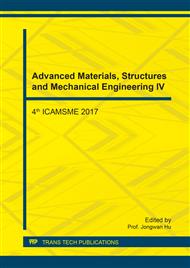p.319
p.327
p.332
p.337
p.342
p.347
p.353
p.358
p.363
Research on the Effect of Deceptive Promotion’s Characteristics on Spillover Effect to Competing Online Stores
Abstract:
Deceptive promotions occur frequently on Taobao Mall, Jd Mall and other net-shopping platforms, which not only affecting the focus online store, but also having favorable or adverse impact on other competing online stores, and cause spillover effect. From the perspective of mass and frequency, this paper used the scenario experiment method to explore the effect of deceptive promotion’s characteristics on negative spillover effect to other competing online stores. The study found that the higher the mass of deceptive promotion is, the stronger negative spillover effect of deceptive promotion from the focus online store to competing online stores is, and the higher the frequency of deceptive promotion is, the stronger negative spillover effect of deceptive promotion from the focus online store to competing online stores is. Frequency moderates the effect of mass on negative spillover effect to competing online stores; under the condition of low-frequency, there are not significant differences between high-mass group and low-mass group; under the condition of high-frequency, spillover effect of high-mass group was significantly stronger than that of low-mass group. In practice, this paper explains the effect of the characteristics of deceptive promotions on spillover effect, which provides valuable reference for competing online stores to predict spillover effect of deceptive promotion effectively.
Info:
Periodical:
Pages:
342-346
Citation:
Online since:
November 2017
Authors:
Keywords:
Price:
Сopyright:
© 2017 Trans Tech Publications Ltd. All Rights Reserved
Share:
Citation:


